After my successful time taking the 3rd Class Foreign Master Instructor course in 2013, I decided to go back with some students to do the course again in 2016.
Wednesday 20th/Thursday 21st
This year I went back to Korea to attend the Instructor Course at Kukkiwon again, but this time I took 4 students with me. Our trip started with four of us (one is joining us later) travelling to Incheon international airport from Heathrow. The flight was pretty uneventful, but landed an hour behind schedule which put us a little later than planned.
We all got a bit of sleep on the plane, but most of us kept waking up and getting our sleep in 30 minute chunks — a little irritating! When we arrived we passed through passport control and immigration without any delay.
We took the 7001 bus to near Master Jeong In-Choul’s dojang then a short (about £4) taxi ride got us really close. I messaged Master Jeong to say we were outside and then looked up to see his happy face running down the street to see us. I’ve only known Master Jeong for a few years, but we got really close because we’ve worked on a few projects together and spoken a lot online since then.
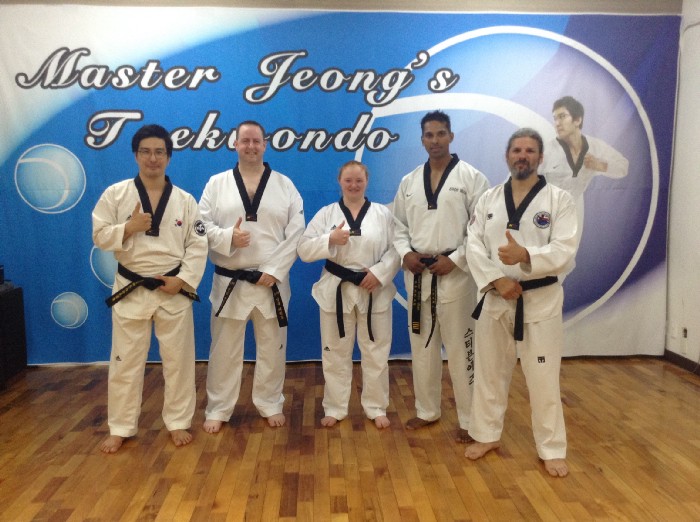
After getting changed, Master Jeong gave us a quick warm up, in a very Korean style (rotations and stretches while everyone counts to 8). Then we did some different drills on how to apply naeryo makki (low/downward block) in the real world. First off we used the downward stroke (action phase) to remove a wrist grab from a same side grab. Then we used the upward portion (preparation phase) to block an incoming jab. Finally we moved on to blocking a jab/cross combo using the preparation and downward block portions from sparring stance, and then a jab/dollyo chagi combo.
After that we went on to poomsae, going through koryo and keumgang quickly with Master Jeong giving us little tips as we did so. Then we went over pyongwon in more detail. The big areas he had our group work on were both using the waist correctly to generate power and correct breathing during poomsae. I felt pretty understanding of both points (not that I’m necessarily perfect at them) as I’ve tried to change both since my last trip to Korea, but for the others this was definitely great practice and improved their poomsae a lot.
When the class finished we went to the SR Hotel in Bucheon to check-in and grab a quick shower. We eventually forced ourselves to get out of our showers (after a long day travelling, then training, the shower was amazing!). We met Master Jeong in the lobby and went back near to his dojang for an amazing dinner of Samgyupsal (pork belly, cooked on a barbeque) and Doenjang-jiggae (soybean and vegetable soup). We had a lovely chat with Master Jeong, about our history and experiences and him sharing his. Master Jeong was very kind in treating us for this meal, and no amount of protesting on our part would convince him to let us pay!
We finished up back at the hotel at about midnight, absolutely exhausted.
Friday 22nd
First stop today was the Changmookwan HQ to meet with the President, Grandmaster Kim Joong-Young and his son, Master Kim Daehyun. After we arrived we were warmly met by the president and introduced to the Secretary General, Grandmaster Cheon. We had a bit of a chat about the recent Changmookwan poomsae championship that had taken part a week before we arrived, future ones and the hopes/vision for Changmookwan’s future. One of my students Matias Mazzeo was then also presented with his Changmookwan Dan, to officially be welcomed in to the Changmookwan family.
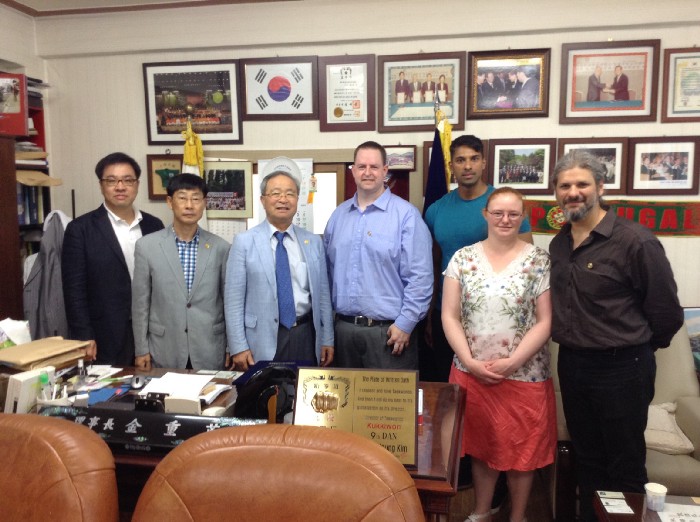
Afterwards a chat in Grandmaster Kim’s office and exchanging some gifts, Grandmaster Kim kindly took us out to lunch at a local restaurant, and showed me some videos of NBC coverage of the Changmookwan competition. While there, a gentleman called Grandmaster Shim Hyeun-Duk joined us. This is one of the members of my instructor Grandmaster Sim Pan’s 9th Dan grading panel. He’s also the president of the Changmookwan Black Belt Union (which is a Korean only association for Changmookwan members, at the moment).
We then went to check in to our apartment in Gangnam, which will be our home for the next 9 days. We arrived and found the place to be a nice size (although the staircase is a bit deadly). Quickly putting the air-con on max, we then went out to find a place to get something to drink, settling on a local coffee shop. After a quick cold drink, our other team member had arrived at the apartment so we headed back.
In the evening we went to visit my friend Master Kim, Kwang-soo (ex-Kukkiwon Demo Team Member) that I met during my 2012 World Taekwondo Leaders Forum. His dojang is called Gaon Taekwondo in Sinchon and it’s a lovely looking place to train. When we arrived we easily found the place from the signs outside, went down in to the gym and entered while some of his students were doing free-training. Master Kim came over and greeted us warmly, then we got changed. Afterwards Erica (Master Kim’s wife, and translator when I can’t express what I want in Korean in my Facebook messages to him) arrived and we had a bit of a chat about their family life.
The class was called to attention and we had a quite dynamic warm-up, to music, with lots of jogging and fast knee movements to warm up. Unfortunately my knee held up right until we were doing criss-cross leg running, which then made it feel too tender to continue. My students carried on training. First up was paddle drills, each of my students paired with a student from Master Kim’s dojang. They had great fun, being pushed hard by their partners and working them hard in return. It felt like we’d made a lot of friends there, and hope that if ever they come to England that they’ll visit/stay with us. Afterwards Master Kim took the class through a section of each of Taebaek and Chonkwon slowly, focussing on correct technique and hip movement.
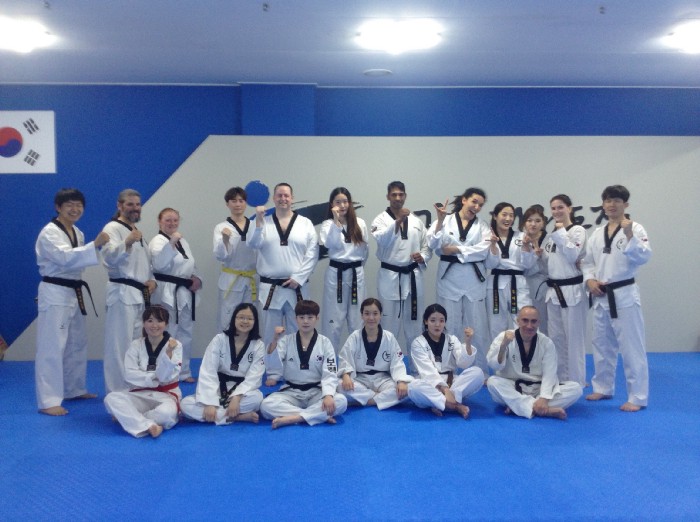
We then went out for Makkeolli and side dishes. Having never Makkeolli before, it’s an interesting taste — kind of like an alcopop, a little fizzy and sweet and sharp at the same time. It was tasty, but not something I could drink more than one glass of. So we then had pancakes (one with Kimchi and squid, the other with vegetables), Ddeukbbokgi — the soy sauce version so it wasn’t hot, and finally some strange cheese-and-egg thing (I don’t know the name of it, but it was nice). We all had a good laugh and some great conversation about differences between Korea and Great Britain (and Spain/Argentina). Master Kim promised that if we come back to Korea he’ll come to England and teach classes at my dojang. We said he’d be very welcome. Then again, we had to argue to pay the bill, but he was having none of it.
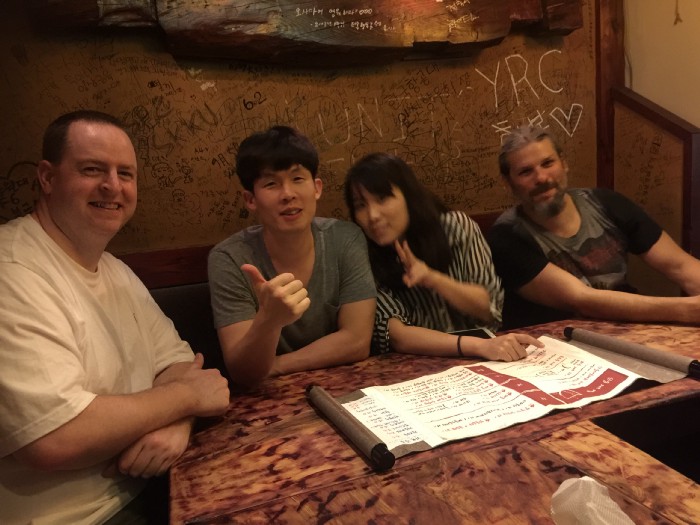
Saturday 23rd
This morning we woke up and went to Kukkiwon first to meet with my adopted Korean brother Master Jeong again for a day of touristy stuff. There was a massive children’s grading taking place at Kukkiwon with literally a hundred orange/yellow Taekwondo buses with various dojang names and logos on them. Master Jeong got stuck in Seoul traffic for a while (the amount of cars driving through Seoul is CRAZY), but it wasn’t a problem because we easily made use of the time in having a look around Kukkiwon, and seeing the museum (which while on previous trips I found to be small, I now found to be quaint).
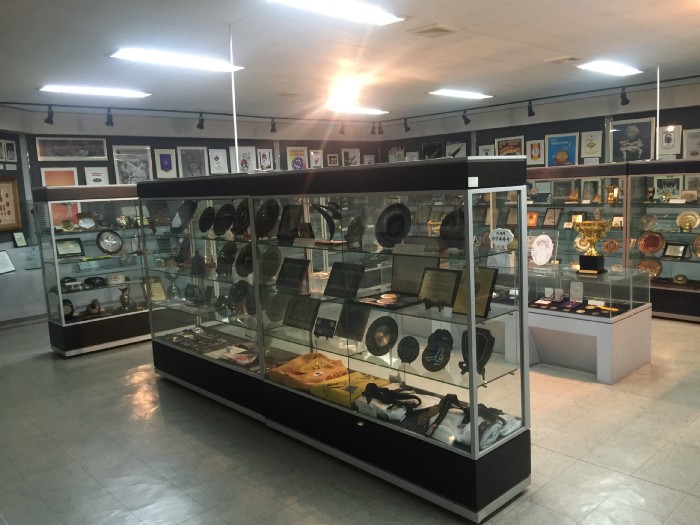
When Master Jeong came we had a quick drink in the Kukkiwon cafeteria and went to do some shopping at the Mooto store and the KSD/Kukkiwon store (the Sangmoosa shop has sadly closed and become a coffee shop). We bought a couple of doboks in the Mooto store, but the bulk of the purchase of shoes and doboks was at KSD. Master Soh, the owner, is soo funny! I tried to explain things in Korean and he kept forcing me to speak English with him (Master Jeong confirmed I was making sense, so I think it was just that Master Soh wanted to practice his English), then he proceeded to speak Spanish with Matias and Jose. A very talented guy, and very patient to put up with me and our many customisations to print on doboks.
Afterwards we dropped the bags off back at our apartment and had a quick drink of water to rehydrate. Then it was off for a quick bite of lunch in a dim sum restaurant (at last we got to pay for someone else!). Master Jeong found out that my senior student Eron’s name, the way it’s pronounced, means “Whoops” in Korean. This was amusing, but then he pointed out that his last name “Miah” means “lost child” in Korean, so his name is like “Whoops, I lost my child!”. We all found that hysterical (well, maybe except Eron)!!!
Then we went on to Kyeongbok Palace. Master Jeong had convinced us to take our doboks, that we would get changed there and take some nice pictures. My Korean tutor thought this would be strange, but the Korean people there LOVED it. As soon as we arrived a couple of girls in Hanbok (traditional Korean dress) and lads came up to as with a board with many shapes of post-it notes on it, asking for what our first experience was of Korea. The theme for the next few hours is that Korean people are surprised at how much Korean I could speak. As we were walking around many of the older gentleman seemed especially proud that foreigners were representing Korean Taekwondo, and young men and women kept asking to join us for photos.
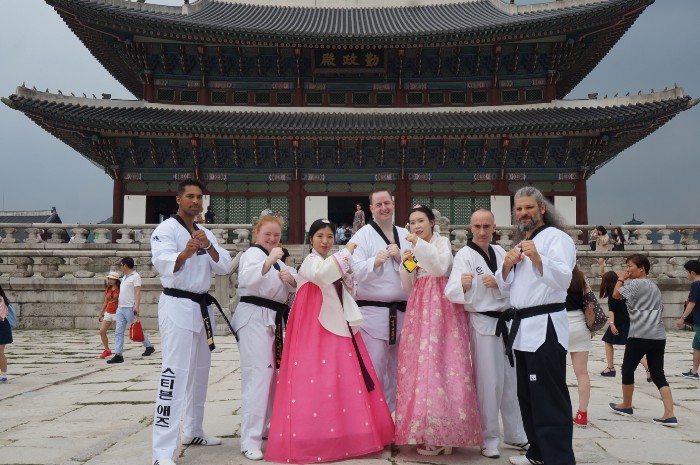
After lots and lots of pictures, including managing to convince Master Jeong to join in for some, we walked to Insadong for a quick look around, although by the time we arrived we were all quite tired (Koreans have an immense capacity for walking, including up huge hills). Again, more people wanted photos with the foreigners in Taekwondo uniforms! Then on to Hanok traditional village in Bukcheon. Even though it was getting dark and rainy, words can’t express how beautiful these houses were. The traditional appearance in the middle of modern Seoul is breathtaking!
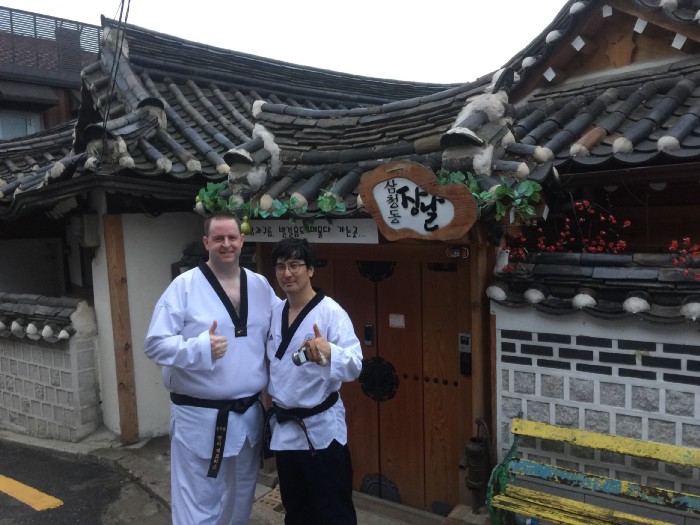
Finally we went for some salad and pasta/pizza and some generally non-alcoholic drinks (after a hard day’s walking around, we needed it) before heading back to Express Bus Terminal with Master Jeong and then splitting for each of us to go home.
Sunday 24th
Sunday morning we awoke nice and early, ready to get to Kukkiwon in time for the course registration opening at 9am. The previous time I went on the instructor course, we all met in one of the lecture rooms, sat down and then just went to the front in random, self-chosen batches to queue up and register. At the end of the registration period last time it seemed that they turned people away as the class was full.
This time it seems that the class was all pre-registered, so there was no need to turn up at 9am to be safe. We went to the World Taekwondo Academy office within Kukkiwon and met Master Na, Young-jib (who I’ve met many times before and been out with a few times). He had a list of attendees so it was a simple matter of handing over our dan certificate/instructor certificate copies, self-certifying our medical condition (no need for paying for doctor’s letters after all) and paying our fees in US dollars.
After a brief 20 minutes of paperwork, we were then dismissed for the day, told to be back for 8:30 and went off for the day to get some drinks and food from a convenience store and chill out in the apartment.
Monday 25th
The first day of the course. We arrived at just before 8am, quickly got changed in to our Taekwondo uniforms and waiting on the main training floor at the Kukkiwon for the class to start. Almost everyone was there early or on time, so there was no need for a major telling off from Kukkiwon like normal. We were then called up in classes — 1st Class first, then 2nd Class (of which I was number one) and then 3rd Class to get our name badge, locker key, text book, timetable and give our sizing for dobok and T-shirts.
A change from last time is that this year the 3rd Class are in one lecture room and 1st/2nd Class are in another, and we will be basically alternating sessions so I’ll never see my students in the same place up until the physical and written tests.
The day itself then proceeded fairly normally; a standard Korean style opening ceremony (a few dignataries, an uplifting but brief speech in Korean by Master Kang, Jae-won (translated by Master Na) and some bowing. We were then asked to volunteer to be class leader and assistant. I volunteered along with a few others for 1st/2nd Class and was selected by Master Kang to be the assistant class leader. A couple where also selected for 3rd Class and then we were sent off to our respective lecture rooms.
Our first lecture of the day was on philosophy (it was labelled as “Special Lecture”), basically how Confuciasnism, Buddhism and Taoism relate to thinking about Taekwondo and teaching. This was a bit spiritual for my tastes, so I wasn’t as fussed. Afterwards we went to lunch in the Kukkiwon cafeteria. The price had increased to 6,000 won, but that’s still cheap as chips for a prison-style tray that you can fill up yourself!
After lunch, we had a modern Taekwondo history lecture from GM Kim, Young-son (who gave the history lecture last time) which was pretty much the same as last time — ancient history of Soobahk/Taekkyun and then in to the Kwans and Gen Choi’s dubious history and rank.
Then it was on to Dan Promotion which was very brief, a bit rambly and didn’t give much information about what would be on the test. This has been pretty much the tone for our lectures so far in the “Senior Group”, in previous courses you get a lot of strong hints, in this one there’s been very little. Slightly concerning, but we’ll see.
Finally, we had Taekwondo Demonstrations with GM Lee Byoung-ho (the guy that took his shirt off in the snow in Seoul last year to protest the Special Dan Tests). The lecture went along the lines of him basically ignoring his slides and just chatting about how Taekwondo is different to other martial arts, we should demonstrate good spirit in our stances before destruction and add humour like giving a huge shout before jumping over a line of people then either run round them or bump in to them.
After being dismissed for the day and being told to be back in class for 8:40 the following morning, my students stayed on the Kukkiwon floor to train for a couple of hours and prepare for the next day. I stayed to help them prepare in teaching minor tweaks to make last minute improvements. Then we went back to the apartment for a quick microwave-meal and to bed.
Tuesday 26th
This morning our first lecture was on Taekwondo Education by Dr Son, Cheontaik of the Kukkiwon Research Institute. He went through some information on psychology including Mavlov’s Hierarchy of Needs and Freud’s Basic Instincts. Then went in to planning a Taekwondo programme, composed of units in quite some detail. He explained about using “Block Time” to consider each lesson as 15 minute blocks to be filled of one area of Taekwondo learning. Then each grade has a certain number of each blocks to be completed before they move to the next grade. E.g. White belts may need more etiquette and basic motions, but black belts may need more advanced kicking, sparring and poomsae. I asked about how this works in dojangs with mixed grade lessons (ours has white belts to 5th Dan training in the same class), he replied that the way to handle this is to use Stations so that different groups of grades can work on different things in different areas of the dojang.
In the afternoon we had coloured belt poomsae training with Grandmaster Kim, Hee-do. He was an excellent instructor, highly accurate and very powerful. He was assisted by a member of the Kukkiwon Demonstration Team. We went through Taegeuk 1–4 before a break, with GM Kim being very considerate of our health in the heat, ensuring we knew to rest if needed and drink water whenever required. He spent considerable time on Taegeuk 1, saying that if you can do an excellent Taegeuk 1, the rest will follow. A lot of our group of Class 1 and 2 attendees are pretty good standards-compliance wise (a first for the Kukkiwon courses I’ve attended), with a couple of exceptions.
After the break we continued with Taegeuk 5–8. There were only a few changes in the way I normally perform poomsae (moving smoothly from wehsanteul makki to the start of dangkyoteok chireugi rather than jerking quickly, bituro makki going to the outside body line, rather than the centre line) but on the whole, I’m happy to come away knowing that the way we do the poomsae in my dojang is pretty Kukkiwon-standard.
Our final lecture for the day was with GM Kwon, Hyung-nam. He took us through the terminology and all the basic motions in Taekwondo. He used some of the old terminology and said that it’s “same, same” with the new terminology which conflicts with what we were told on the examiner course; but that’s life. He was excellent at demonstrating correct starting positions and motions during the lecture. Fortunately, it wasn’t too tiring of a session so we finished quite upbeat (unlike the 3rd Class attendees who were almost killed by GM Hwang, In-Sik — we have that session first thing in the morning).
Then it was home for dinner, clothes washing, an instant dinner and bed after FaceTiming my family!
Wednesday 27th
Wednesday was to be the harder day for the 1st and 2nd Class candidates. We had Grandmaster Hwang’s black belt poomsae lecture in the morning. This seemed like a pretty tough session to us, most of the drills we did were the same as the previous class he ran for the other group yesterday, but I suspect he took it quite a bit easier on us.
The motions were as I already learnt, the only minor change was the boulder pushing in Sipjin — this was expected though because photographs have been doing the rounds since the previous year’s world championships.
In between we had a lecture on Health, Injury Prevention and First Aid from Dr Kim, Jeong-Weon from Kyung-Hee University Hospital. He went through the signs of an injury (heat, pain, redness and swelling) and how to treat an injury with PRICE (Protection, Rest the affected part only, Ice immediately, Compress and Elevate). He also said that after an injury you should check for blood flow (by squeezing the fingernail, watching for it to go pale, then return to pink) and for continued neurotransmission by scratching each finger with your nails.
We went through how to improve strength, power and endurance using different rep ranges during weight training (6–8, 10, 12–15 respectively) and how to calculate what the one rep maximum weight is (1RM) given that you know how many reps you can do with any given weight.
W1 = W2 x R x 0.025
1RM = W1 + W2
W2 is the amount of weight you used, R is the amount of repetitions you could do. Given those two values you can calculate W1 which when then added to your W2 gives you your 1RM (at least in theory), you can then calculate back from this to know how much weight to use for a given number of target reps.
He then also took us through the equation for calculating the optimal heart rate for aerobic fitness improvement, which is actually a tweaked version of something I thought I understood, but apparently not. So the maximum heart rate is always 220-Age. Given this though, to calculate a target heart rate you should remove the resting pulse rate, multiply the remainder by say 75% and the re-add back in the resting pulse rate. I’m sure other places just multiplied the maximum heart rate by 75%.
The final session was on sparring training. The professor was an ex-World Champion (although I didn’t catch his name) and a current instructor to both the military and US CIA. He was assisted by an ex-Kukkiwon Demonstration Team member, Master Leo Kim. We warmed up with a fairly standard warm-up and then it was in to some footwork combinations done to numbers. Sometimes the instructor said one number but held up his fingers for another, then berated the class for doing as we were told to do. I think this was a philosophical lesson that you shouldn’t look for what your opponent is telling you (feints), but what they are doing (body position, patterns of movement, etc).
Then we went on to some simple paddle drills. Unfortunately during one of these I hurt my knee (this was a previous injury that had so far held up well, but two intense 3 hour sessions in a day was too much for it). I sat out and watched the rest.
Thursday 28th
The first session of the day was on self-defence, run by GM Kim, Moon-Ok. Before going on to the dojang floor we watch a 20 minute video in the classroom containing the entire new syllabus of Kukkiwon-Taekwondo self-defence. I recorded this on my iPad, but as GM Kim said it was a rough version and not the finished product, I won’t be uploading it anywhere. I was pleased to see that it includes all of the stuff that we already do in my dojang, including breakfalls, hapkido-style joint locks and throws, as well as more Judo style takedowns, gun/knife disarms and BJJ type submissions such as rear naked chokes, armbars, guillotines and americanas.
We then went on to the floor to practice some wrist and hair releases. These were very similar to how my dojang already does it but with some subtle differences in placement and style. When the Kukkiwon finishes the final self-defence DVD it’ll be easier to ensure everyone is teaching the same syllabus.
After that was a philosophy lecture by the president of the World Taekwondo Academy. He went through what were important elements of health and types of breathing:
- Automatic — where you are breathing but aren’t conscious/thinking about it.
- Semi-automatic — where you are exercising hard, breathing heavy and are aware of it.
- Manual — where you are specifically and intentionally controlling your breath.
He said that adult lung capacities range between 3500–4000ml, during automatic breathing you only replace 500ml with each breath. During semi-automatic you replace 2000ml, but during manual breathing you should aim to replace all of it. The way to do this is by imagining that you are breathing in and out of a straw attached to your danjung (the point half way between your belly button and pubic mound), breathe all the way out to it feels like your abs are stuck to your spine, then breath all the way in. Use a small ‘o’ shape in your mouth but visualise it going straight I through the imaginary straw.
After this, we had an hour’s free study before the physical testing began. For the physical testing we were told to wait in the classroom as it was beastly hot on the floor and we’d be called up in groups of 5 to perform in front of three 9th Dan grandmasters. I was in the first group up in 2nd Class, and I had to perform Taegeuk Chil Jang and Chonkwon, we were given notice the day before what the poomsae would be. I felt that my performance was good, I didn’t make any huge/glaring errors so was happy with myself.
Others weren’t so lucky, two of the 3rd Class candidates completely failed to even start one of their poomsae. So a lesson for anyone coming — KNOW your poomsae. I was surprised that as a Kukkiwon 6th Dan I needed Chonkwon, but glad I know ahead of the poomsae for my grade (because I have a Changmookwan 7th Dan).
After the testing we were all given a World Taekwondo Academy uniform with Kukkiwon on the back and a t-shirt, and dismissed for the day to go home and study for the following day’s written exam.
Friday 29th
After going through quite a few of the hints we’d been given in the lectures (and then falling asleep reading the textbook section on promotion regulations), I felt pretty happen during the written test. Fingers crossed we’ll all have passed. I think the 2nd and 1st Class had it even easier, when the WTA staff were coming round clarifying the English in the questions and helping to ensure that you didn’t get answers wrong through misunderstanding.
After this it was into the main hall again for the closing ceremony. There were about 16 people chosen to receive a citation from the Kukkiwon (myself included, so that puts the pressure on for 100% when I eventually go back for my 1st class), so we went up on stage first, received the certificate and a gift of a Kukkiwon watch, then came back down to the floor for a final speech, then a group photo (we had many of the during the course).
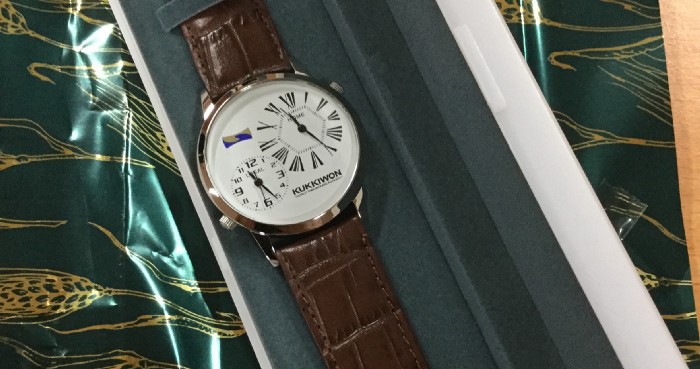
Then we were dismissed, to go back, get changed out of our doboks and swap the locker key for a completion certificate.
Overall I think the course was very successfully delivered, better than my last one and while I think everyone will always have their most and least favourite sessions, they were all generally really good this time. My only real criticism is in the translation of the exam paper which can make it difficult to understand.